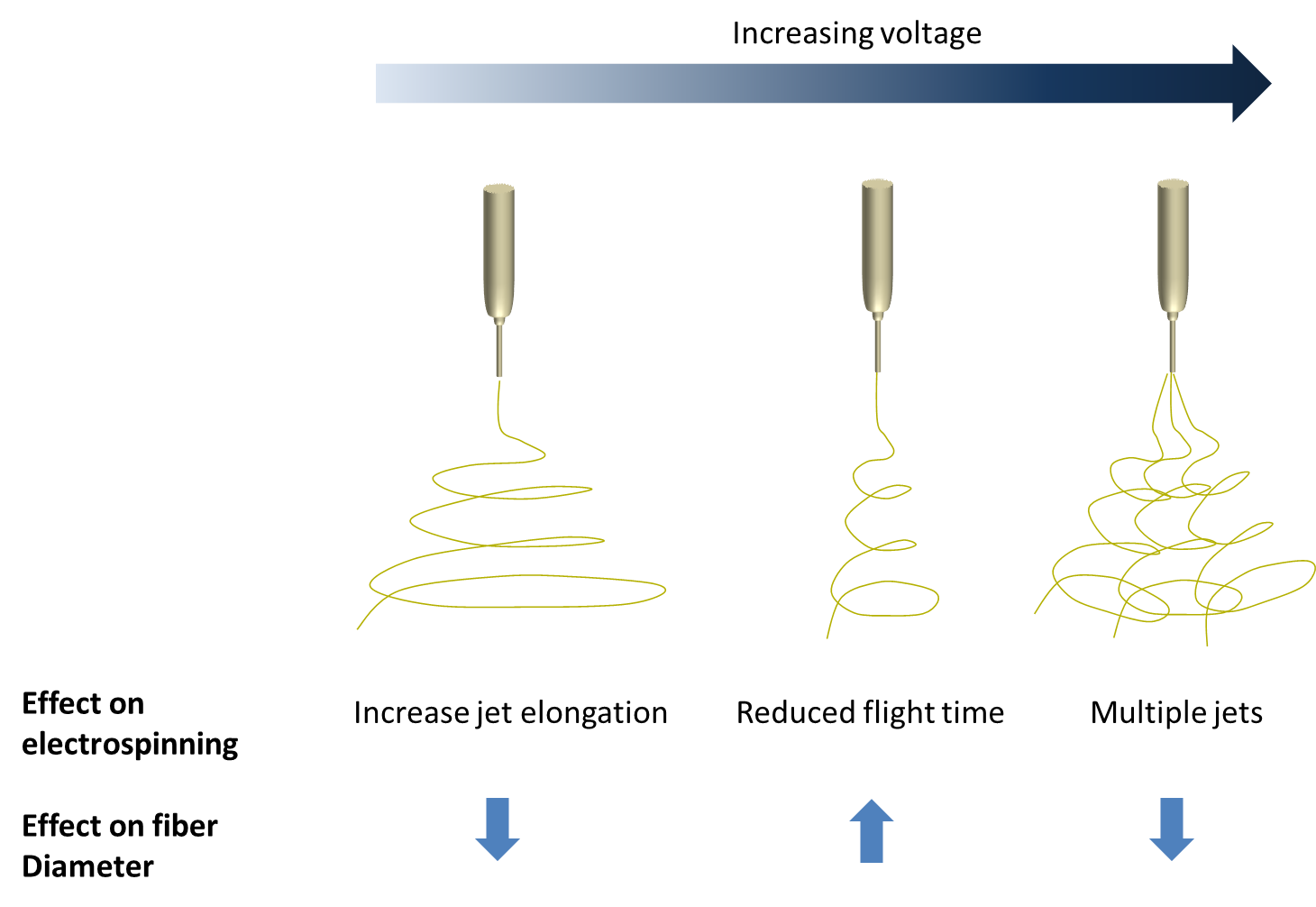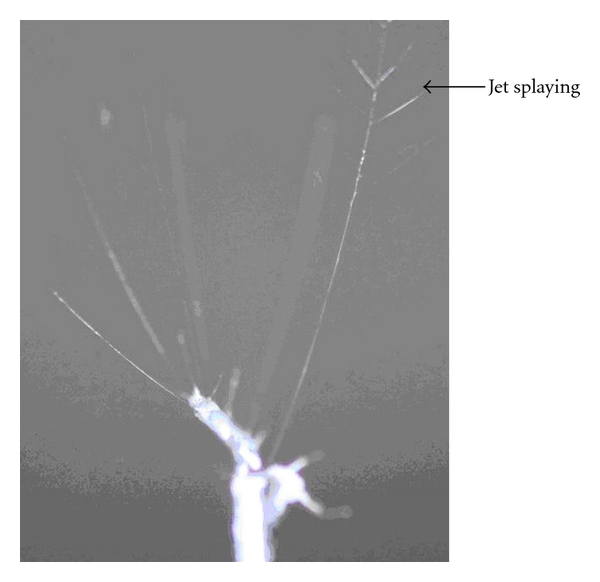▼ Reference
- Angammana C J. A Study of the Effects of Solution and Process Parameters on the Electrospinning Process and Nanofibre Morphology. PhD Thesis. University of Waterloo 2011. Open Access
- Arayanarakul K, Choktaweesap N, Aht-ong D, Meechaisue C, Supaphol P. Effects of Poly(ethylene glycol), Inorganic Salt, Sodium Dodecyl Sulfate, and Solvent System on Electrospinning of Poly(ethylene oxide). Macromol. Mater. Eng. 2006; 291: 581
- Bosworth L A, Downes S. Acetone, a Sustainable Solvent for Electrospinning Poly(e-Caprolactone) Fibres: Effect of Varying Parameters and Solution Concentrations on Fibre Diameter. J Polym Environ. 2012; 20: 879.
- Buchko C J, Chen L C, Shen Y, Martin D C (1999) Processing microstructural characterization of porous biocompatible protein polymer thin films. Polymer 40 pp. 7397
- Choi J S, Lee S W, Jeong L, Bae S H, Min B C, Youk J H, Park W H. Effect of organosoluble salts on the nanofibrous structure of electrospun poly(3-hydroxybutyrate-co-3-hydroxyvalerate) Int J Biol Macromol. 2004; 34:249
- Ding W, Wei S, Zhu J, Chen X, Rutman D, Guo Z. Manipulated Electrospun PVA Nanofibers with Inexpensive Salts. Macromol. Mater. Eng. 2010; 295: 958
- Eda G. Effects of Solution Rheology on Electrospinning of Polystyrene. MSc Thesis 2006. Worcester Polytechnic Institute. Open Access
- Fashandi H, Karimi M. Pore formation in polystyrene fiber by superimposing temperature and relative humidity of electrospinning atmosphere. Polymer 2012; 53: 5832.
- Fong H, Chun I, Reneker D H. Beaded nanofibers formed during electrospinning. Polymer 1999; 40: 4585.
- Golin A. Humidity effect on the structure of electrospun core-shell PCL-PEG fibers for tissue regeneration applications. PhD Thesis 2014. The University of Western Ontario. Open Access
- Hardick O, Stevens B, Bracewell. Nanofiber fabrication in a temperature and humidity controlled environment for improved fibre consistency. Nature Precedings 2010; 4524.1. Open Access
- Heikkila P, Harlin A. Parameter study of electrospinning of polyamide-6. European Polymer Journal 2008; 44: 3067.
- Htike H H, Chen L, Sachiko S. The Effect of Relative Humidity on Electrospinning of Poly-(vinyl alcohol) with Soluble Eggshell Membrane. Journal of Textile Engineering 2012; 58: 9. Open Access
- Icoglu H I, Ogulata R T. Effect of ambient parameters on morphology of electrospun polyetherimide (PEI) fibers. Tekstil ve Konfekslyon 2013; 23: 313. Open Access
- Kim G T, Lee J S, Shin J H, Ahn Y C, Jeong K H, Sung C M, Lee J K. Effect of Humidity on the Microstructures of Electrospun Polystyrene Nanofibers. Microsc Microanal 2004; 10: 554.
- Lee J S, Choi K H, Ghim H D, Kim S S, Chun D H, Kim H Y, Lyoo W S (2004) Role of molecular weight of atactic poly(vinyl alcohol) (PVA) in the structure and properties of PVA nanofabric prepared by electrospinning. J. Appl. Polym. Sci. 93 pp. 1638.
- Mazoochi T, Hamadanian M, Ahmadi M, Jabbari V. Investigation of the morphological characteristics of nanofibrous membrane as electrospun in the different processing parameters. International Journal of Industrial Chemistry 2012; 3: 2 Open Access
- Milleret V, Simona B, Neuenschwander P, Hall H. Tuning Electrospinning Parameters for Production of 3D-Fiber Fleeces with Increased Porosity for Soft Tissue Engineering Applications. European Cells and Materials 2011; 21: 286. Open Access
- Mit-uppatham C, Nithitanakul M, Supaphol P. Effects of Solution Concentration, Emitting Electrode Polarity, Solvent Type, and Salt Addition on Electrospun Polyamide-6 Fibers: A Preliminary Report. Macromol. Symp. 2004; 216: 293.
- Morsy R. Influence of substrate temperature parameter on electrospinning process: example of application to the formation of gelatin fibers. Polym. Bull. (2022). Open Access
- Schoenmaker B, Van der Schueren L, Ceylan O, Clerck K. Electrospun Polyamide 4.6 Nanofibrous Nonwovens: Parameter Study and Characterization. Journal of Nanomaterials 2012; 860654. Open Access
- Tan S H, Inai R, Kotaki M, Ramakrishna S. Systematic parameter study for ultra-fine fiber fabrication via electrospinning process. Polymer 2005; 46: 6128.
- Thompson C J, Chase G G, Yarin A L, Reneker D H. Effects of parameters on nanofiber diameter determined from electrospinning model. Polymer 2007; 48: 6913.
- Tong H W, Wang M. Negative voltage electrospinning and positive voltage electrospinning of tissue engineering scaffolds: A comparative study and charge retention on scaffolds. Nano LIFE 2012; 2: 16 pages.
- Wang C, Chien H S, Yan K W, Hung C L, Hung K L, Tsai S J, Jhang H J. Correlation between processing parameters and microstructure of electrospun poly(D,L-lactic acid) nanofibers. Polymer 2009; 50: 6100.
- Wang X, Cao J, Hu Z, Pan W, Liu Z. Jet Shaping Nanofibers and the Collection of Nanofiber Mats in Electrospinning. J. Mater. Sci. Technol. 2006; 22: 536.
- Wu C M, Chiou H G, Lin S L, Lin J M. Effects of Electrostatic Polarity and the Types of Electrical Charging on Electrospinning Behavior. J Appl Polym Sci 2012; 126: E89.
- Zargham S, Bazgir S, Tavakoli A, Rashidi A S, Damerchely R. The Effect of Flow Rate on Morphology and Deposition Area of Electrospun Nylon 6 Nanofiber. Journal of Engineered Fibers and Fabrics 2012; 7: 42. Open Access
- Zhao S L, Wu X H, Wang L G, Huang Y (2004) Electrospinning of Ethyl-Cyanoethyl Cellulose/Tetrahydrofuran Solutions. J. Appl. Polym. Sci. 91 pp. 242.
- Zhong X H, Kim K S, Fang D F, Ran S F, Hsiao B S, Chu B. (2002) Structure and process relationship of Electrospun bioabsorbable nanofiber membranes. Polymer 43 pp. 4403.
▼ Credit and Acknowledgement
Author
Wee-Eong TEO View profile
Email: weeeong@yahoo.com
 ElectrospinTech
ElectrospinTech

